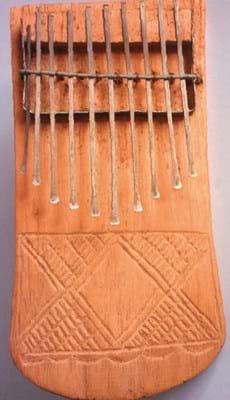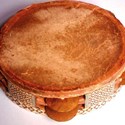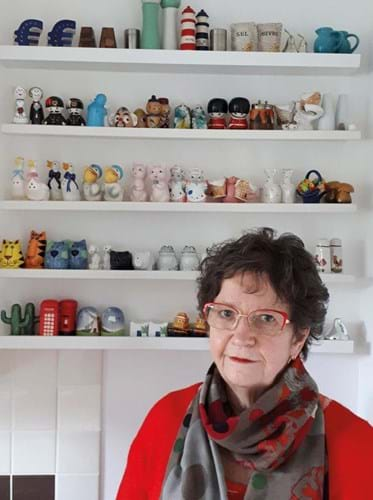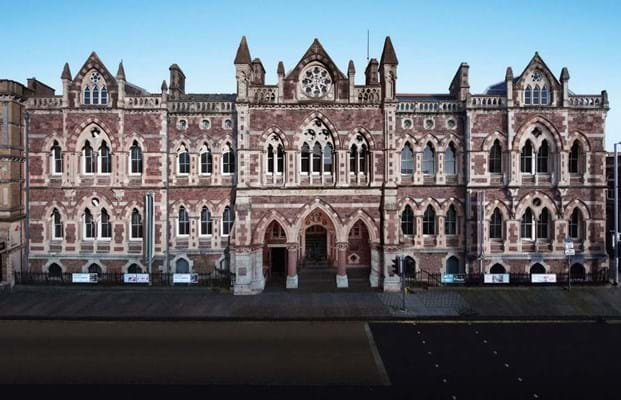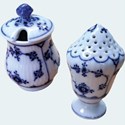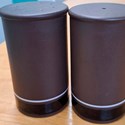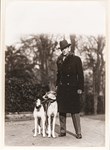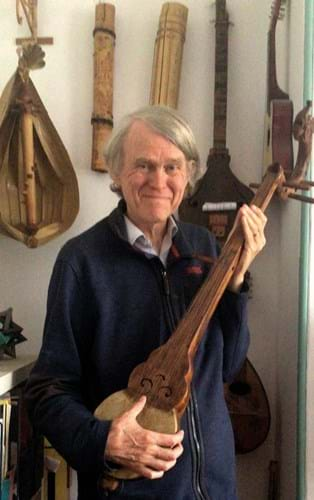
Ian Summers holding a long lute dranyen from Bhutan in the Himalayas. The carved dragon is said to scare away any evil spirits who may be attracted by the music.
Founded on Victorian collections, The Royal Albert Memorial Museum and Art Gallery (RAMM) in Exeter also celebrates plenty of local collectors today. Its special display case features two collections per year and has featured oil cans, Lego, skirt lifters and eye baths. Here we talk to the current exhibitor, Ian Summers, who collects musical instruments, and one featured recently, Gillian Skyte, who has a passion for salt and pepper shakers.
Stringed instruments
Ian Summers collects unusual musical instruments from around the world and from history. While “stringed instruments are my favourites,” he also has wind and percussion instruments.
How did you get the collecting bug?
Ian Summers: as a teenager around 1970, reading books and visiting museums, I was fascinated by the variety of musical instruments around the world. From there it was a small step to collecting.
My first purchase was a small lute or baglamas, bought in Athens in 1972. So I’ve been collecting for 50 years: that’s another aspect of my collection – it’s like a sort of journal which represent the different stages of my life.
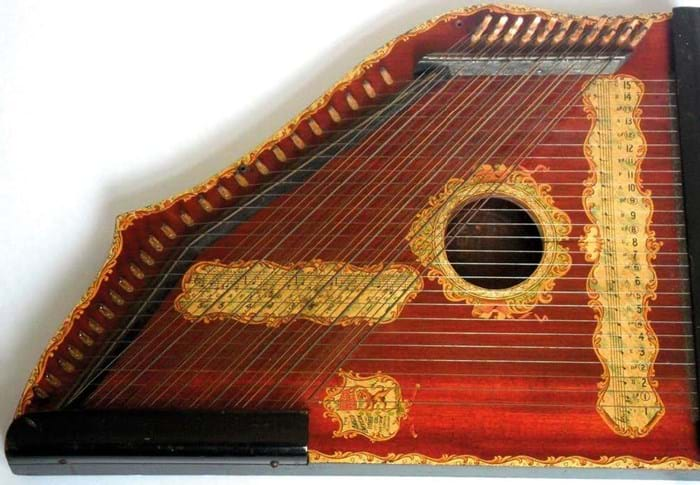
A chord zither made c.1890. This is a stringed version of the accordion – the melody is played by one hand and pre-set chords (the diagonal strings) are played by the other.
Why do you concentrate on stringed instruments?
I suppose I’m a guitarist at heart, so that’s part of it. But I think stringed instruments are attractive because you can see the mechanics of producing the sound, with strings of different lengths or thickness, for example (whereas you can’t see the air in wind instruments).
Where do you usually buy?
Moore’s Music Emporium in Taunton is a favourite of mine, and I also dig around on eBay. I try to buy instruments which are playable or have some chance of being made so. Musical instruments are for playing, not just for looking at. I’ve made quite a few YouTube videos of myself playing various instruments and it’s always good when someone takes an interest in one of those.
What is the most expensive item in the collection?
A flamenco guitar by Vicente Sanchis, which I suppose would cost around £1000 today.
On the other hand, I did find a rather attractive set of Indian brass bells in Poundland.
These were sold as contemporary decorative pieces but are of the sort used for sheep or goats, fastened to a cast-iron frame. I’m not sure what they’re meant for or how they found their way to Poundland, but they make a good sound.
How have you funded your collecting habit?
On the whole there’s nothing very pricey, because I’ve never felt the need to explore that end of the market. Collecting is not really a commercial practice for me. I’ve acquired my collection over a period of 50 years, so that’s maybe one instrument every two months on average. It’s not been a major drain on my resources. I never sell anything on, though I might give an instrument to someone who has a particular interest.
What is one great discovery you’ve made?
I recently came across an English ‘bell harp’ from the late 19th century, with the added bonus that previous owners had written their repertoire on the back – a real piece of social history.
In general I’m not sure I’ve made any ‘great’ discoveries, but it’s always good to find something that the seller can’t identify.
How do you display the collection in your home?
I have over 300 instruments so it’s not easy to store them. The larger instruments hang from picture rails and the smaller ones are fitted into any spaces I can find.
You’ve been exhibiting at several museums recently. How did that come about and what are the benefits?
I have a small exhibit at the RAMM in Exeter until January 2023 and a larger exhibition at Torquay Museum until March 2023. They weren’t meant to overlap but both were rescheduled, which made things more complicated than I’d expected. Both exhibitions arose from my taking an interest in the museums’ collections – the RAMM exhibit runs alongside an exhibit of their instruments and the Torquay Museum exhibition includes some of theirs.
I’m not sure there is much benefit to me personally, but I hope some of the museum visitors will discover an unexpected interest in musical instruments.
Who is someone you admire in your field?
Randy Raine Reusch from Vancouver who has made a lifelong career around his interest in musical instruments and has a much larger collection than mine.
What advice would you give to someone just starting out as a collector?
Go for the things you are particularly drawn to – that’s more important than the monetary value.
Salt and pepper pots
Gillian Skyte and her husband collect salt and pepper pots.
Has it always been salt and pepper pots?
Gillian Skyte: no, I’d made some small collections in the past. I really started with retro jugs. I got to about 12 or 15 but they’re difficult to store and when we moved I sadly got rid of some of them.
I’ve also got more than 200 scarves, which is fairly unusual. And I’ve got around 17 retro coffee pots (ranging from Meakin to Royal Doulton) in the downstairs loo, and about 20 mid-century cup/saucer/ plate trios. I’ve always collected with an eye to colour, design and craftsmanship.
So how did the current collection come about?
By accident. One day in 1998 I visited Chelsea Crafts Fair. My husband was at work in London, and we both bought each other salt and pepper pots that day. After that we started accumulating them, word got out, and friends would give them to us for Christmas.
At the time we had a house in France and we used to love going to brocantes and second hand shops to see if they had any of interest. We now have around 110 sets.
How do you choose what to buy?
We’re not experts, we’ve just bought the ones we like. In my experience that’s why most people collect, not for investment but for your own pleasure.
Whenever we go anywhere, especially when we go to a new city, we look out for additions. If we go abroad we always get one – they may be very clichéd, like a windmill from Holland or a kangaroo from Australia – but stylish ones! We have examples from most European countries now.
And how do you display them?
On top of the kitchen cupboards. They all get backlit and make good talking points.
What are some of the more notable sets?
There is one from Hornsea (Lancaster) Pottery. They are absolutely plain matt brown and very contemporary despite dating from the 60s or 70s. Good design does not date. Probably the oldest set is one that a friend gave me – a set of Royal Copenhagen from around 1900. It’s actually pepper and mustard – the salt is missing.
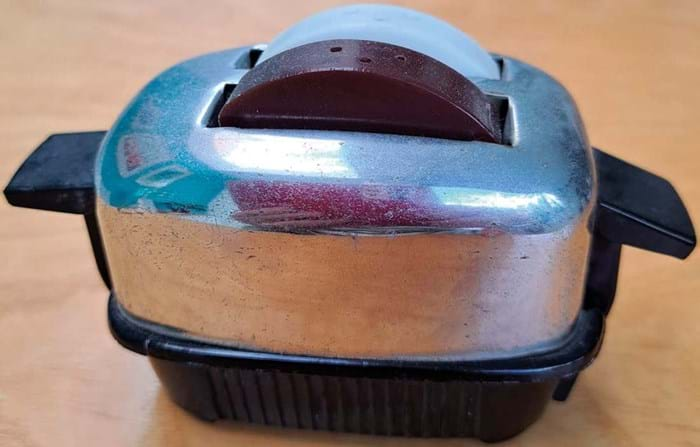
A favourite – a toaster where the pieces of ‘toast’ contain the salt and pepper and pop out of the holder.
What is the best part of collecting?
One of the pleasures of collecting is the search. Sometimes you can go hunting and there’s nothing, but often you do find a salt and pepper set. I wouldn’t like to collect in a field where it was years before you found something. On the other hand, a few years ago we found a shop in Brooklyn that sold only salt and pepper shakers and thought ‘where do we stop?’.
Collectors who would like to feature at the Royal Albert Museum and Art Gallery in Exeter can apply online. Next up is an international assortment of lace bobbins from a collection of more than 2000.


